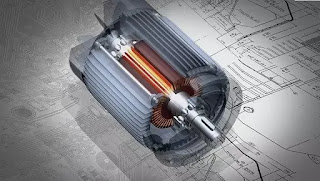Fault diagnosis in EV Battery.
BY AFZAL YOUSAF
As electric vehicles are increasing in our roads, peoples are eager to know more about EVs. There are few components in electric vehicle where fault can occur compared to IC Engine vehicles. Battery is the source of energy in EVs and it is one of the important part where failure can cause a costly breakdown for the vehicle. In the early stage, fault diagnosis in EV battery were simple and relies on over current, over voltage, over heating etc. But with improved technology, fault diagnosis in EV battery becomes more diverse and specific.
Read this article to find out possible faults that may occur in your EVs battery, working of BMS and Battery diagnostic system.
Normally battery fault in EVs can be classified into four:-
- Battery voltage fault
- Battery current fault
- Battery temperature fault
- Battery state of charge (SOC) fault.
Battery temperature fault usually occurs due to over temperature and under temperature. Batteries works under a temperature range on max and min, if it goes beyond that level in both the ends, chances of temperature fault is high.
Battery state of charge fault occurs due to the fault in charging. It is due to the fault in Pre-charge, over charge and over discharge.
Now to find and monitor all the above faults Battery Management System (BMS) is used. BMS aims to provide Safe, Reliable and Cost efficient solution to the battery faults.
Schematic representation of BMS is shown above. Battery voltage, current, temperature is measured and converted into sub system of BMS for thermal management, state of health estimation and the estimation of state of charge. BMS effectively contributes for the enhancement of battery performance and life span. But there are some limitations in accuracy of parameter estimation and function for the BMS. For advanced and individual fault diagnosis, we may use Battery fault diagnostic system.
Battery diagnostic system is more flexible than BMS and acts as an individual diagnostic system for the battery. It consists of two parts.
- Hardware
- Software
From the above schematic presentation we can see that Hardware part is receiving signal on battery parameters like voltage, current and temperature. Signal modulation circuit modulates all these signals and stores in Data acquisition card. And in software part, battery status testing and fault diagnosis takes place. From acquisition module, when the signal reaches Management module, by using time domain analysis and current pulse method, fault signature are obtained and displayed in the module. The fault diagnosis is done by comparing the signals before and after short circuit pulse is inserted. In this way Battery diagnostic system checks the cells individually and improve battery performance.
As a summary we can conclude that BMS is a system that regularly monitors and improves the performance of the system. But it is limited to the estimation accuracy and when more accuracy is demanded in the system, Battery diagnostic system is needed in addition to BMS.
Credits:- Journal of Asian electric vehicles and authors.
Subscribe to wheelsatev.com to get the notification of the articles related to Fault diagnosis in Electric motor and Power electronics components of EV.
Read article related to fault diagnosis in electric motor used for EVs.
Comment your thoughts and queries related to the topic. Keep Reading.









Excellent
ReplyDeleteThank you. Keep reading.
DeleteExcellent ..
ReplyDeleteThank you. Keep reading and support wheelsatev.com
DeleteThank you for sharing your info. I truly appreciate your efforts and I am waiting for your next post thanks.. Synchronous Motor
ReplyDeleteThank you. Keep supporting.
DeleteSure. Keep reading and support.
ReplyDelete